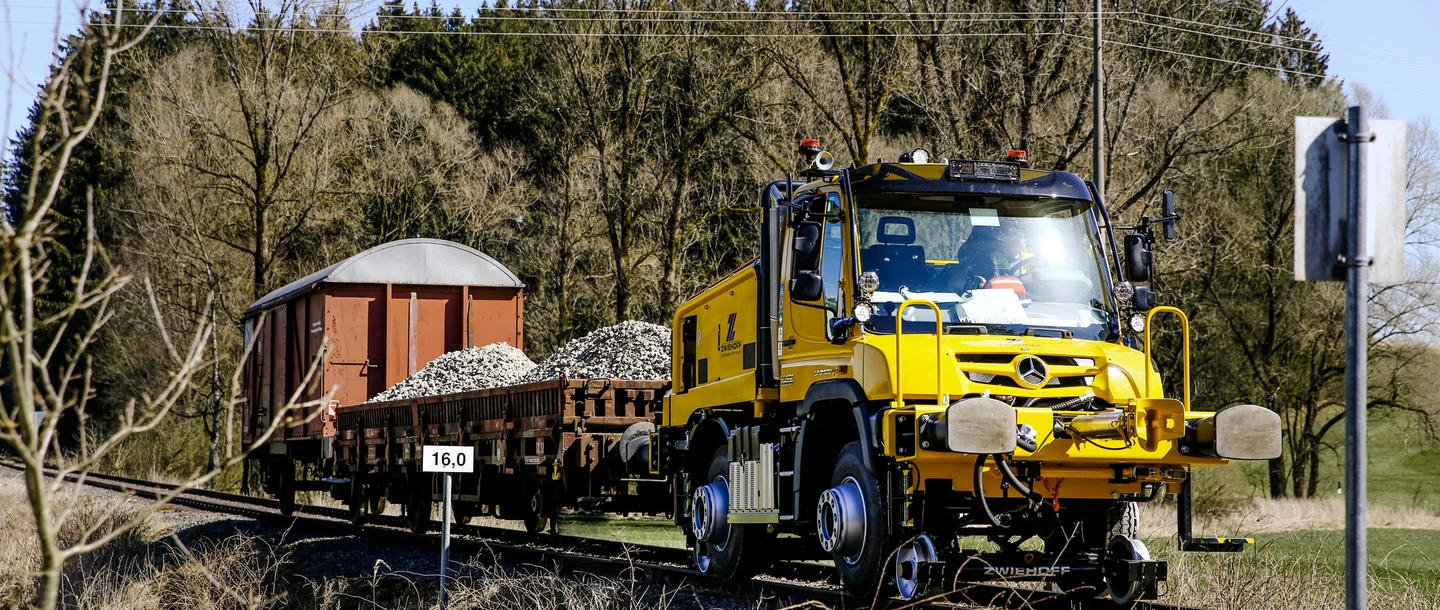InnoTrans 2024 | Unimog U 423
Cost-efficient shunting up to 1,000 t.
The Unimog road-railer has a high tractive force and can tow a trailer load of up to 1,000 t. This is possible by the torque converter clutch, the permanent all-wheel drive, compact axles and the drive via its own wheels. By quickly switching between rail and road, the fully fledged rail vehicle can be used flexibly at any time - not least because the Unimog is full of options beyond shunting: its attachment and body areas as well as the mechanical, electrical and hydraulic interfaces make it ideal for a wide range of applications in the maintenance of the rail infrastructure.
Your Benefits:
- Fast and flexible changing between road and rail operation
in minutes - Trailer weigths up to 1,000 t
- Modern engine with low fuel consumption (complies with Euro VIe emissions class)
- Radio remote control for efficient shunting
- High tractive forces thanks to torque converter clutch
- Driven by the vehicle's wheels on rails for maximum traction
- Travel to the work site at up to 89 km/h (limited by law)
Technical Specifications.
| Model | Mercedes-Benz Unimog U 423 |
|---|---|
| Engine | 4-cylinder diesel engine (OM 934 LA) with BlueTec 6 |
| Output | 170 kW (231 hp) |
| Emission class | Euro VIe |
| Wheelbase | 3,000 mm |
| Gross vehicle weight | 13.0 t |
| Transmission | Fully synchronised manual transmission with 8 forward and 8 reverse gears |
| Drive system | Permanent all-wheel drive (4x4) with 3 differential locks (interaxle, rear/front axle) |
| Wheels | Tapered rims with MITAS SRT2, 275/90 R22.5 tyres |
| Vmax | Road: 89 km/h (limited by law), Rail (technical): 50 km/h (forward/reverse) |
Equipment.
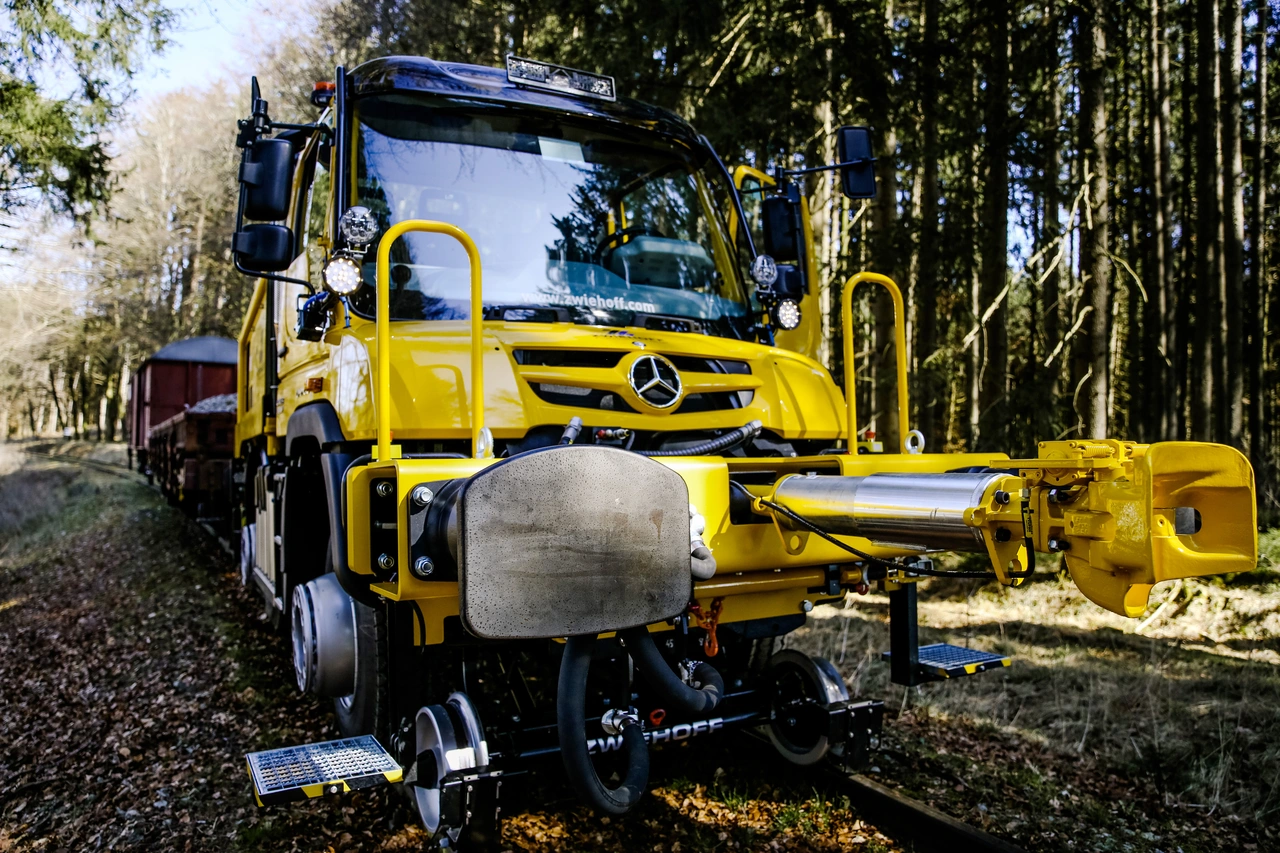
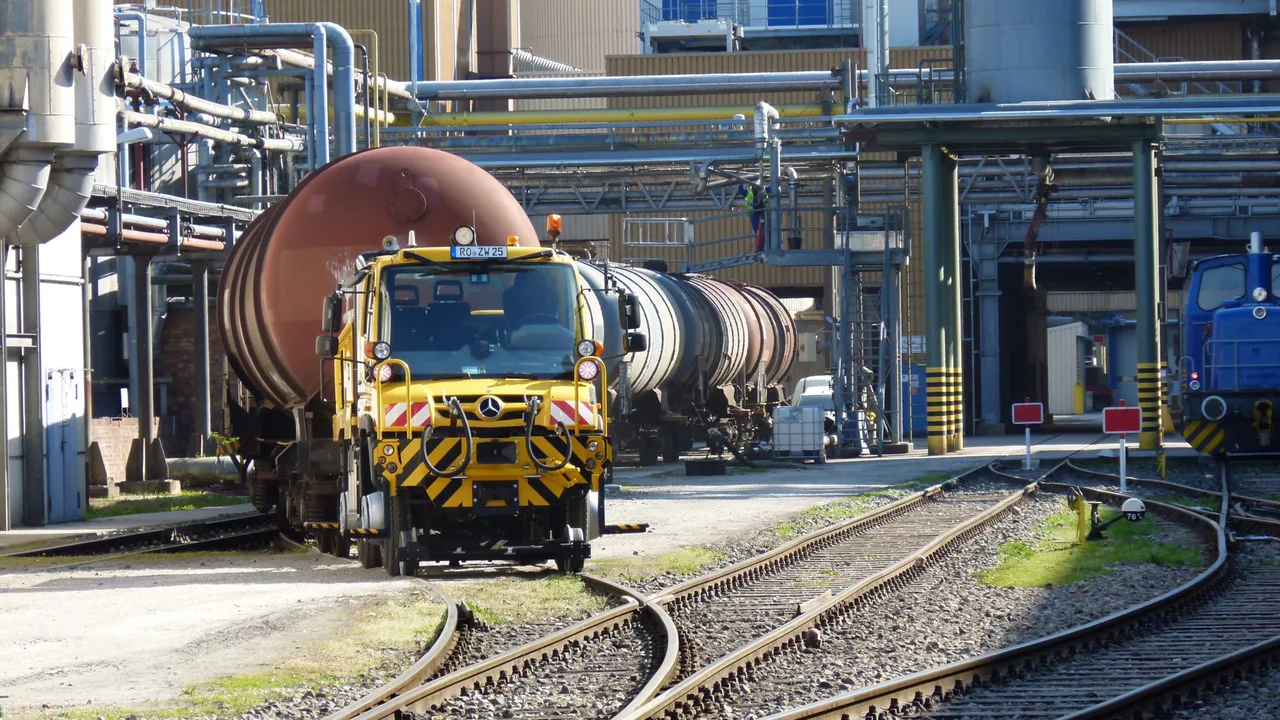
Highlights:
- 3-seat cab made of corrosion-free fibre composite material, tested in accordance with ECE-R29/3
- Panorama windscreen
- Steering column adjustable in height and tilt
- Multi-function steering wheel
- Air-conditioning unit
- Two-stage high-performance engine brake
- ABS anti-lock braking system
- Torque converter clutch for smooth moving off with high towing capacities - without wear
- Rear engine power take-off for driving a high-performance compressor
- Holding brake on front axle
- Trailer brake, 2-line
- Preinstallation for radio remote control
Implement/body information:
- ZWIEHOFF rail guiding system type Z423
- Controlled according to DIN EN13849-1 and EN50239
- Knorr-Bremse brake system type VV90T 800 t.
- Compressed-air quality according to ISO 8573, class 2-2-2
Bodybuilding partner.
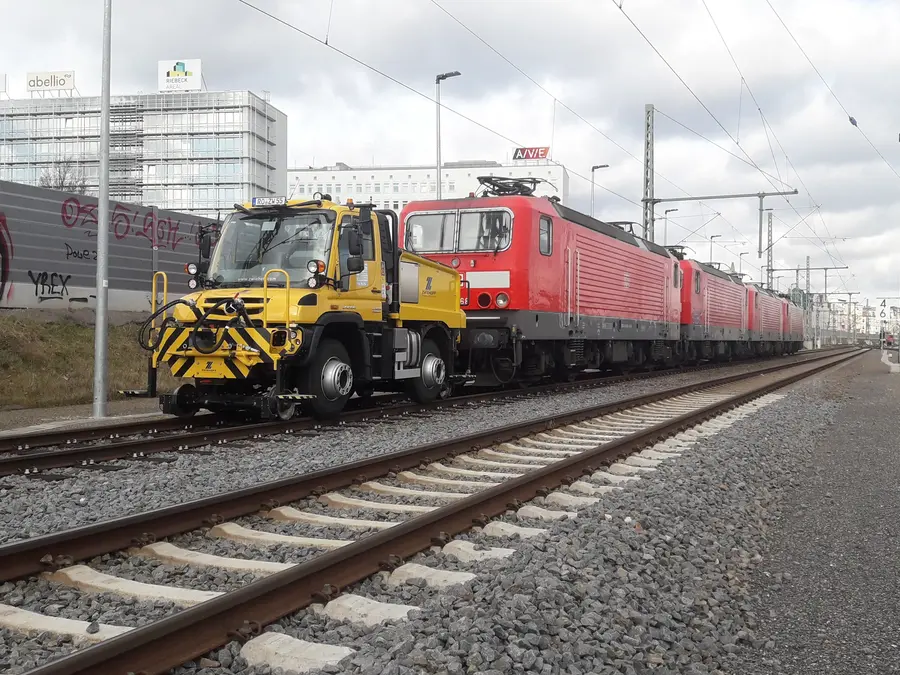
G. Zwiehoff GmbH
In 1995, Gerd Zwiehoff founded G. Zwiehoff GmbH and sold the Unimog as a road-rail vehicle worldwide. Since the introduction of the Unimog U 400 in 2000, there has been intensive cooperation and system partnership with the Unimog product division. With the new Euro VI generation, Zwiehoff developed its own rail guide for the Unimog U 423.
G. Zwiehoff GmbH is an official Unimog ExpertPartner.
G. Zwiehoff GmbH
Gießereistraße 883022
RosenheimGermany
Tel.: +49(0)8031 23285-0
E-Mail: info[at]zwiehoff.de
www.zwiehoff.com
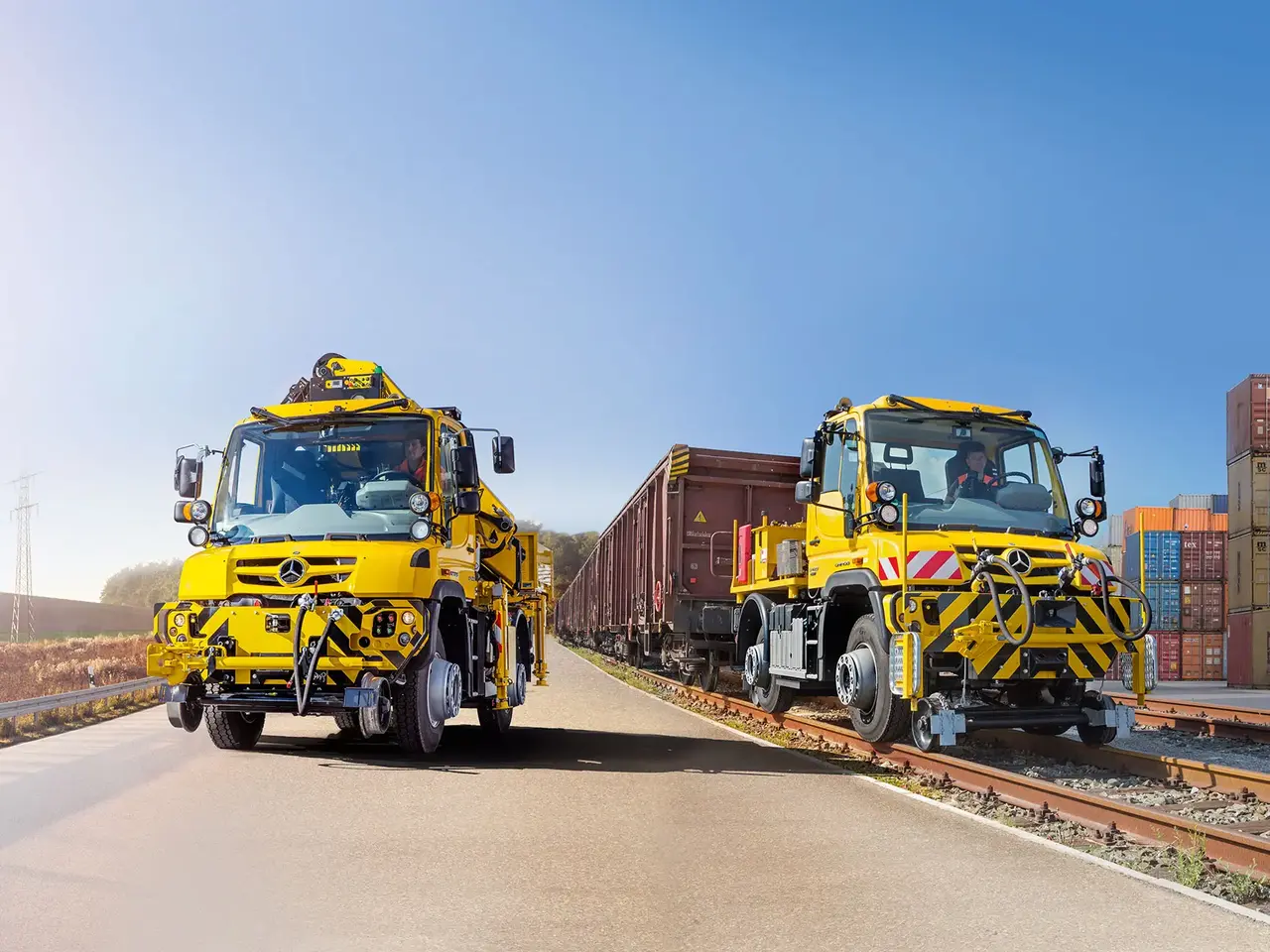
More information on the road-rail Unimog.
The Unimog manoeuvres in road-rail operations with a high tractive force of up to 1,000 t towed load. This is possible thanks to the torque converter clutch, permanent all-wheel drive, compact axles and drive via the truck’s own wheels. The fully-fledged rail vehicle is flexible at all times thanks to the quick transition between rail and road – not least because the Unimog is full of possibilities that go far beyond shunting: Its attachment and body mounting spaces as well as the mechanical, electrical and hydraulic interfaces make it ideal for a wide range of tasks in the maintenance and repair of the rail infrastructure.
